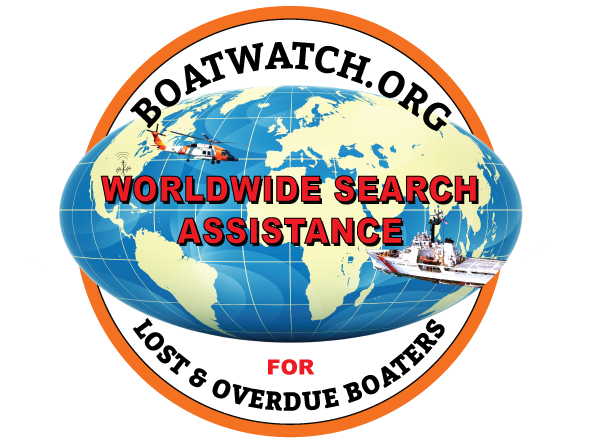Boatwatch received this first hand account of a rescue from a dinghy at night in cold Maine waters. A dinghy is a very important asset to a boater and can save your life if properly outfitted for any circumstance.
Please Wear Your Life Jackets
By Captain Judy Long & Captain Stephen Sellinger of SV Bentaña. Judy Long and Stephen Sellinger are both 100 Ton Master Captains. They have been cruising full time aboard their 41’ Gulfstar ketch since October of 2010.

I saw your post requesting first hand accounts of rescues. Here is a rescue that we participated in in late September or early October of 2018 in Robinhood, ME at Georgetown Island.
Dear Ones, hug your loved ones a little closer tonight and tell them you love them. And those of you who are boaters, PLEASE wear your life jackets. Yesterday morning, we had breakfast with some boating friends. Just by luck and because we might not have made Portland before dark, we decided to take a day to just relax.
We were enjoying dinner in the cockpit around 8 pm, before the moon came up. We were in Robinhood, ME which is a pretty quiet (and dark) harbor this time of the year. All of a sudden we heard people talking very loud and thought it was kids on shore. Then we heard the HELP, HELP! I leaned out and yelled, “Are you ok? What’s the matter?” as we were grabbing our life jackets and a flash light. “We are in the water,” was the response.
We jumped in the dinghy and sped to the sound of the voices, knowing by then that it was our friends who had joined us for breakfast. They had managed to put the dog aboard the sailboat, then they had a mishap getting out of the dinghy onto the boat. The wife slipped and fell back down onto her husband who was in the stern of the hard dinghy. With the double weight astern, it filled the dinghy with water and then it capsized. The current was pushing them away from their boat. We found them 50 to 75 feet away and luckily they were still with the, by then, overturned dinghy.
When we got to them we attempted to get the woman in our dinghy as she seemed to be the one in the worst shape. She had elevated heart rate and was gurgling as she breathed and spoke. Fortunately, our dinghy was a bit under inflated from the cool air, so with the painter as a step we were finally able to pull her head first into our dinghy. By then another dinghy had arrived and the husband was holding onto that vessel.
We maneuvered the two dinghies to put him between us, but he was unable to lift himself high enough to get in to either dinghy. Also we were doing our best to counter balance our dinghies so that we did not capsize. We heard sirens indicating that someone had called 911 and someone yelled that the Coast Guard would be arriving in about 10 minutes. (They just happened to be doing night time training and were in the area. Otherwise, it would have taken them much longer to arrive.) We needed more help and another power vessel came out from the marina. With all three vessels together and the husband in the middle, he was able to grab the fixed rails of the power vessel and with a little pushing and pulling from all participants, he finally slid in under the rail onto the power boat.
The wife was in the water for at least 20 minutes, the husband for at least 30 minutes in 67 degree water. Their life jackets were in the dinghy, but not on them. They were cold and hypothermic.
They wanted to go back to their boat to change their clothes. The wife was unable to get onto the boat from our dinghy, so she was transported to shore by the USCG boat to deliver her to the ambulance and I got dry clothes for her from her boat. By then, the power vessel had brought the husband back to the boat and I noticed that he was confused and moving slowly. He finally got into dry clothes and we put a life jacket on him and were going to take him to shore, but the USCG boat had returned and they took him.
The power vessel had towed the capsized dinghy to the dock and one oar had been recovered. We dinghied to the dock, spoke to the USCG and I went up to the ambulance. It was decided that they both should have medical care at the ER. The wife went by ambulance and the husband was going to drive. Due to the husband’s confused state, I drove him to the hospital.
They were both examined at the hospital and observed for two hours as they were getting warmed up. Luckily, both were well enough to go home. We drove back to the marina and Steph met us at the dock to ferry us all back to our respective boats. I fell into bed at 0130. The adrenaline had disappeared and I was exhausted.
Thankfully, they are recovering and are now wearing life jackets in the dinghy, are considering getting an inflatable dinghy that is more stable and are going to recommend that the launch drivers at the marina wear life jackets as an example to other boaters. And one of the guys at the marina was able to de water their outboard and make it run again! Woohoo!
PS Lessons Learned
1. Always wear your life jacket in the dinghy.
2. Have a signaling device, like a whistle, available.
3. Carry a vhf radio in the dinghy.
4. Have a light in the dinghy.
5. Have a way to get back into your dinghy.
5. Have an emergency ladder accessible on your boat
